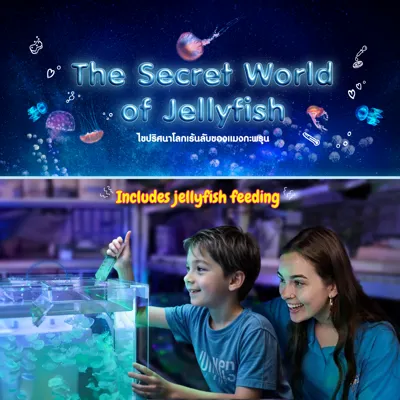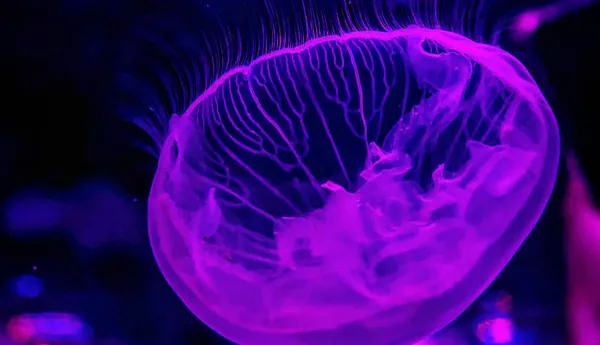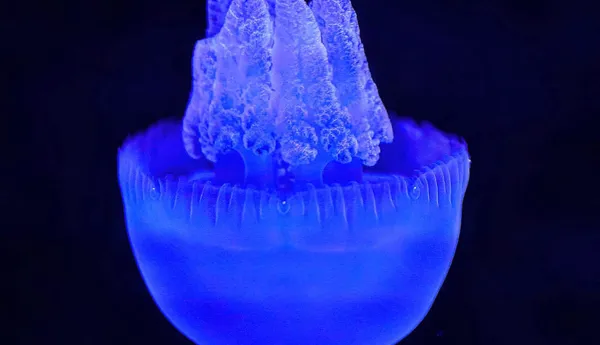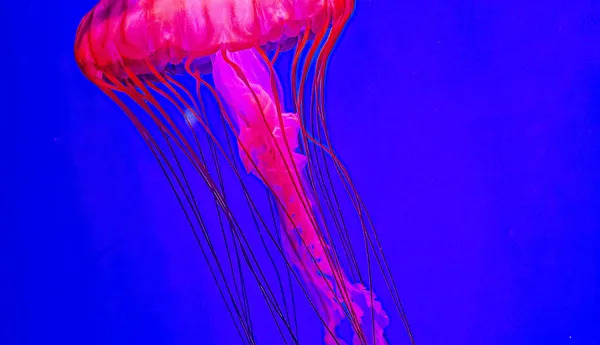Jellyfish Universe
You can discover more about these amazing creatures at the Jellyfish Universe at SEA LIFE Bangkok.

Experience an enchanting Jellyfish Universe
SEA LIFE Bangkok unveils an all-new Jellyfish experience ‘The Jellyfish Universe’, a captivating zone that sets itself apart with its dynamic lighting, innovative display designs, vibrant hues, and mesmerizing inhabitants.
These enigmatic creatures, with their delicate forms illuminated by ethereal glows, exude a natural beauty that enthrals all who behold them.
Immerse yourself in their presence and be transported to a realm of magic, where marvel and fascination converge, bringing the wonders of the natural world to life right before your eyes.

Jellyfish Lab Experience
Explore behind the scenes action at the Jellyfish Lab and encounter jellyfish up close through a feeding session.
Learn about Jellyfishes

Moon Jellyfish
Moon jellyfish have a mesmerizing appearance with their translucent, bell-shaped bodies. One of their most incredible features is their bioluminescence. They can produce a soft, glowing light, pulsing gently through the water. Moon jellyfish have a unique feeding strategy. They capture prey, such as plankton and small fish, using their trailing tentacles covered in sticky mucus. Once captured, the prey is transported to the jellyfish's mouth located in the center of its bell. While many jellyfish species are equipped with powerful stingers, moon jellyfish have a mild sting as their tentacles are covered in tiny, harmless nematocysts.

Blue Blubber Jellyfish
The Blue blubber jellyfish gets its name from its blue-colored bell-shaped body. It's also sometimes called the "Blue jellyfish”. These jellyfish are nocturnal feeders, meaning they are most active at night. They use the cover of darkness to hunt for food and avoid predators. Like other jellyfish, Blue blubbers use their stinging tentacles for defense and to capture prey. Their sting is not usually harmful to humans, but it can cause irritations. Blue blubber jellyfish have a fascinating reproductive strategy. They release both eggs and sperm into the water, where fertilization occurs externally. The fertilized eggs develop into larvae, eventually settling on the ocean floor and growing into adult jellyfish.

Pacific Sea Nettles
Pacific sea nettles are best known for their striking appearance, with long, trailing tentacles. Their bell is usually translucent or slightly opaque and can vary in colour from white to light pink or yellow. Commonly found in the Pacific Ocean, they prefer coastal waters but some can also be found in deeper ocean habitats. These jellyfish have thousands of stinging cells called ‘nematocysts’ on their tentacles. These stingers are used to capture prey and defend against predators. Their sting can be painful to humans, though it's not usually life-threatening. Despite their potentially painful sting, Pacific sea nettles are graceful swimmers. They use pulsations of their bell to propel themselves through the water and rely on ocean currents to travel long distances.